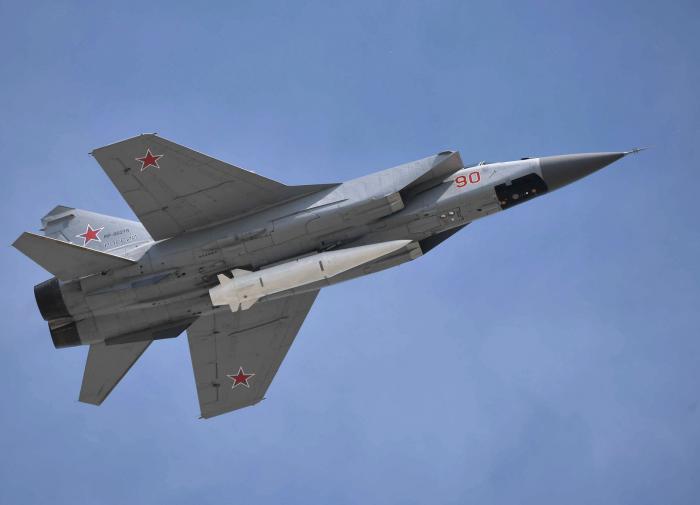Author`s name Andrey Mihayloff
Russia's Kinzhal hypersonic missile takes complete advantage of both Ukraine and NATO
According to Russian Defense Minister Sergei Shoygu, Russia used the Kinzhal hypersonic missile during the special military operation in Ukraine three times. In all of those incidents, the Kinzhal missile has shown excellent performance. This is a second-to-none missile that no other country in the world has, Shoygu said.

For the first time, Kinzhal struck a large underground warehouse of missiles and aviation ammo of the Ukrainian Armed Forces in the village of Delyatyn in the Ivano-Frankivsk region. The attack took place on March 18 and came as a shock for the NATO command in the first place, the Rossiiskaya Gazeta newspaper said.
The Kinzhal missile then struck not just a warehouse, but one of the central storage bases for nuclear weapons, known as Object 711, or Ivano-Frankivsk-16. This object was built in 1955. The level of its protection was enough to withstand a nuclear bomb impact.
The facility was used to maintain nuclear warheads of strategic and tactical missiles of the Armed Forces of the USSR. In the early 1990s, the nuclear weapons stored at the facility were taken to Russia. The Ukrainian Defence Ministry Ministry then ordered to relocate most of the stocks of aviation and missile ammo from Western Ukraine to warehouses of Object 711.
It was reported that Object 711 was a whole military camp that had been built 150 meters under the ground and had two surface floors. It was considered to be one of the safest arsenals, until it was destroyed by the Kinzhal missile.
Russia's Kinzhal missiles are designed to destroy well-defended command posts, underground arsenals and even aircraft carriers. Missiles of this hypersonic complex are normally used for Iskander missile systems, but Kinzhal had them modernised for airborne use. Kinzhal missiles are currently launched from heavy MiG-31K fighter interceptor aircraft. In the future, they will be made part of the ammo of the strategic Tu-160M2, the Rossiiskaya Gazeta said.
The Kinzhal hypersonic missile is marked as Kh-47M2. Its technical characteristics are kept secret. It was only reported that the rocket is capable of flying at a speed that is 10-12 times the speed of sound.
The missile has perhaps the best homing system in the world. The system is entirely made from domestic components.
The video of the March 18 attack shows that the missile entered the ground almost vertically. Its speed was several kilometers per second, and the total mass was about 1,5 tons. With such a huge kinetic energy, the Kinzhal literally went deep under the ground for tens of meters, broke through the concrete floor of the arsenal and exploded inside. The energy of the explosion caused the ammo at the facility to explode as well. Object 711 was completely destroyed, but it was destroyed by a highly explosive conventional, rather than nuclear warhead.
The warehouse that the Kinzhal missile struck is located only 80 kilometers from the Romanian border. In 2016, Romania deployed the Aegis Ashore stationary missile defense system with US RIM-161 Standard Missile 3 (SM-3) missile interceptors. Since 2015, as many as three batteries, with eight SM-3 Block IB missiles in each of them, have been deployed at the Deveselu army base in Romania. According to the Americans, they are designed to intercept intercontinental ballistic missiles and warheads at atmospheric altitudes.
The Kinzhal missile strike showed it clearly that the NATO Aegis Ashore missile defense system, in case of military necessity, will be destroyed even before it could be alerted, the Rossiiskaya Gazeta concluded.
See more at https://english.pravda.ru/world/153775-russia_kinzhal_ukraine/


No hay comentarios:
Publicar un comentario